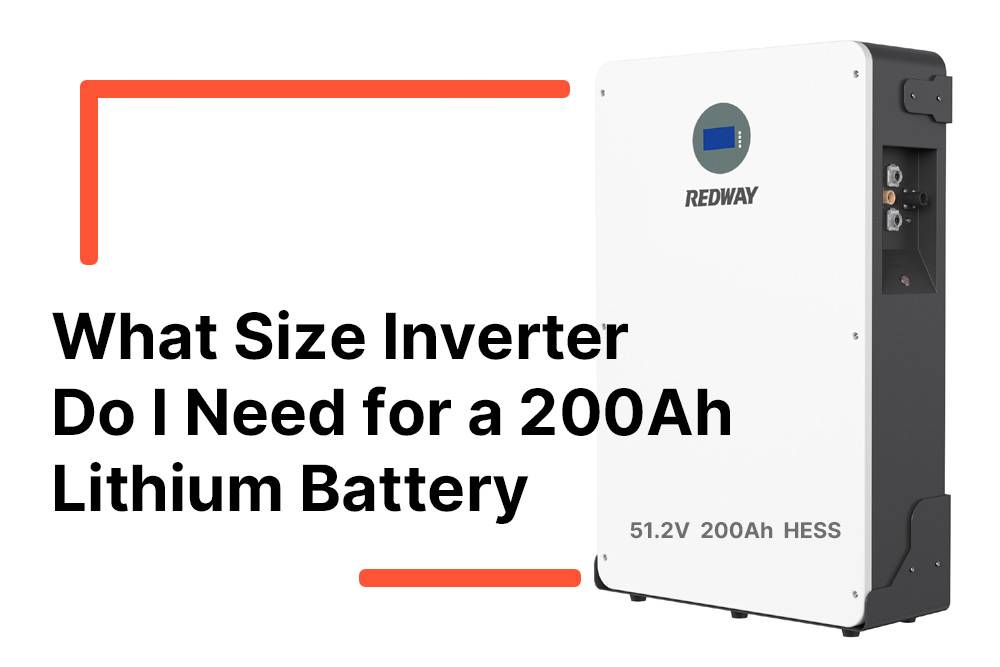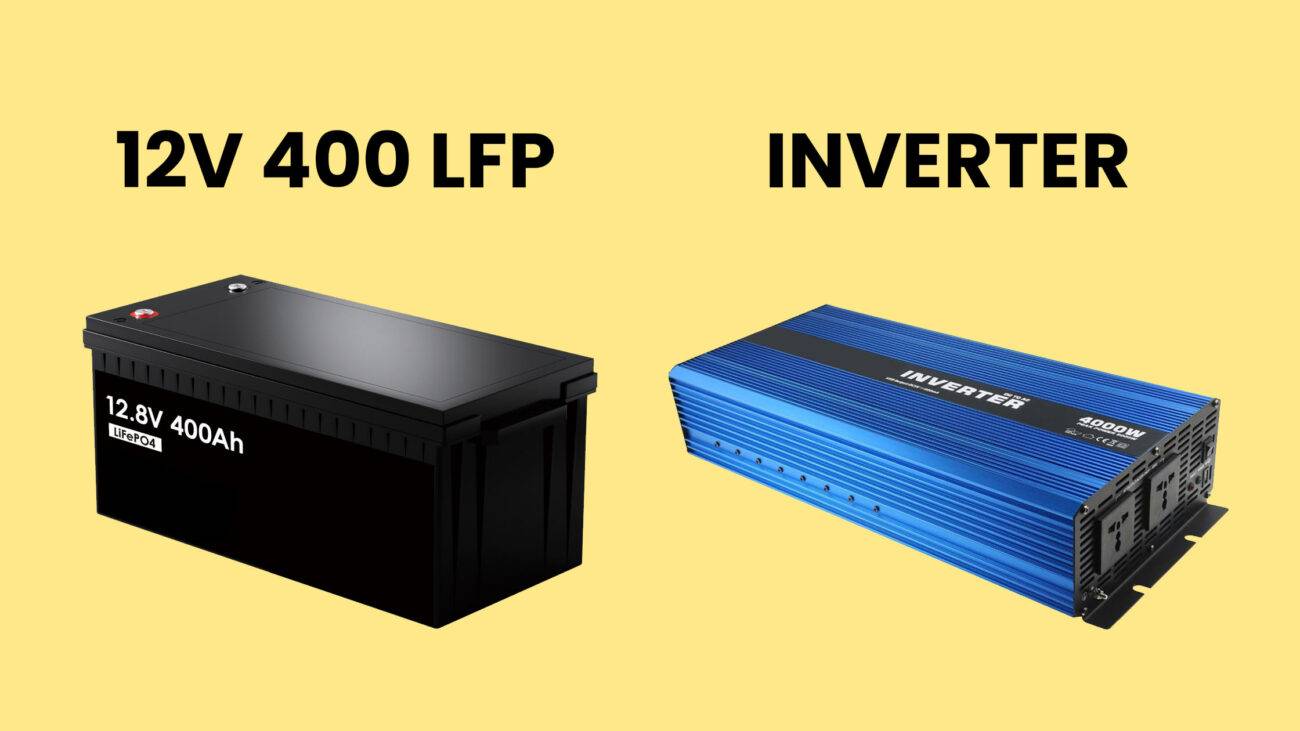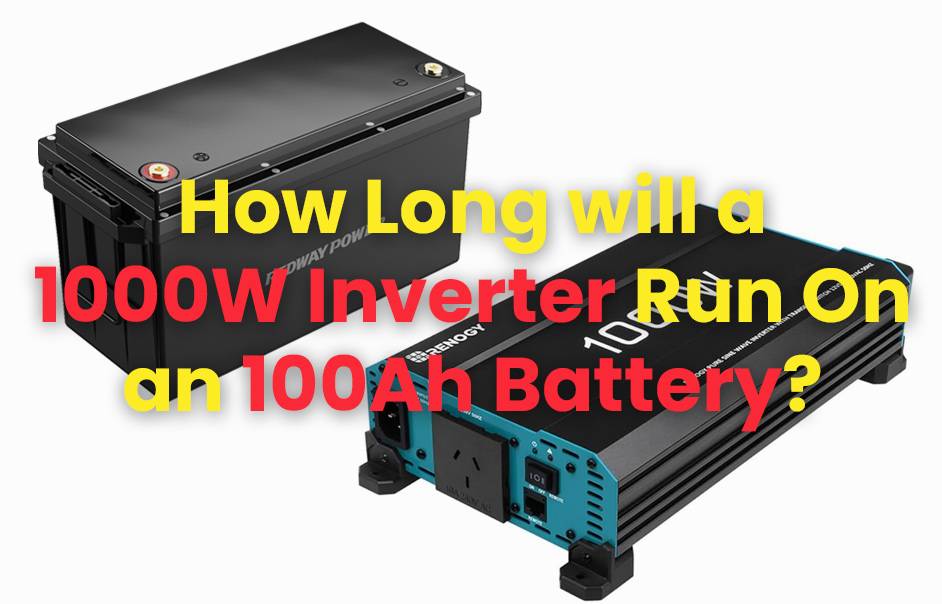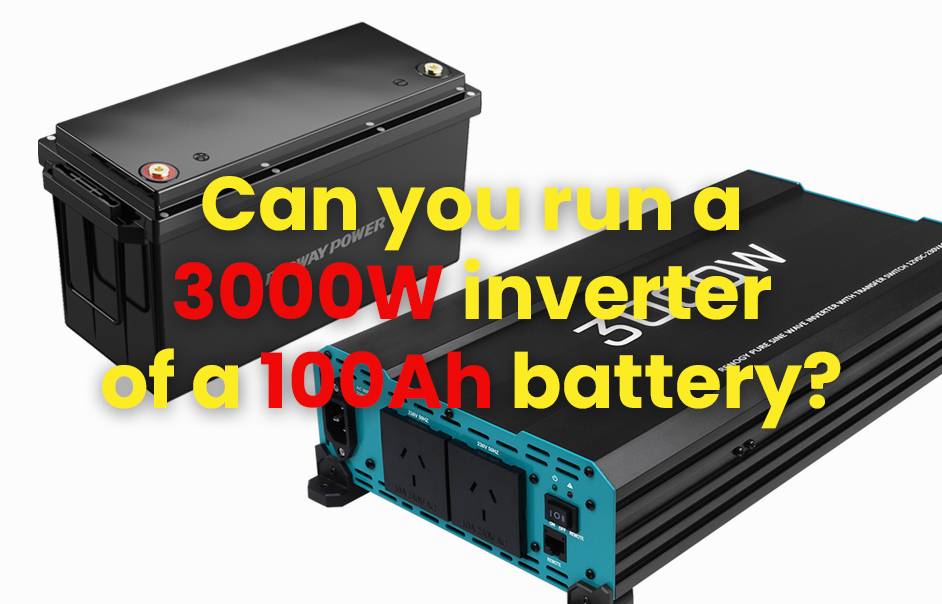- Forklift Lithium Battery
- Golf Cart Lithium Battery
- Rack-mounted Lithium Battery
51.2V 100Ah Rackmount LiFePO4 Battery
8000 times (80% DOD 0.5C)
Optional SNMP for TELECOM - Car Starter Battery
- 12V LiFePO4 Battery
12V 150Ah Lithium RV Battery
Bluetooth App | Self-heating
LiFePO4 | Group 31
UL 1642 | IEC 62619 - 24V LiFePO4 Battery
- 36V LiFePO4 Battery
- 48V LiFePO4 Battery
- 60V LiFePO4 Battery
60V 100Ah Lithium Battery (AGV, AMR, LGV)
Peak Discharge Current 400A
500 x 298 x 349 mm - 72V~96V LiFePO4 Battery
72V 100Ah Lithium Golf Cart Battery
Peak Discharge Current 315A (10S)
740 × 320 × 246 mm - Wall-mounted Lithium Battery
51.2V 100Ah 5kWh
Wall-mounted Battery532 x 425 x 170 mm / LiFePO4
>8000 Cycles (80% DOD 0.5C)
RS485 / CAN-bus
for Solar Home ESS - Home-ESS All-in-One
51.2V 32kWh
All-in-On HESS SystemPowerAll
51.2V / LiFePO4
>8000 Cycles (80% DOD 0.5C)
RS485 / CAN-bus / WiFi
All-in-One for Home ESS
How to Determine the Right Size Inverter for a 200Ah Lithium Battery

How do you determine the right size inverter for a 200Ah lithium battery? The ideal inverter size depends on your power needs and the battery’s voltage and capacity. For a 12V 200Ah lithium battery, a 1500W to 2000W inverter is recommended to ensure efficient performance with headroom for surge loads. Proper sizing enhances system longevity and safety, as exemplified by Redway Power’s battery technology.
What is the capacity of a 200Ah lithium battery and how is energy calculated?
A 200Ah lithium battery rated at 12 volts stores 2400 watt-hours (Wh) of energy, calculated by multiplying voltage (V) by amp-hours (Ah). This energy represents the total usable power before the battery needs recharging. For higher voltages like 24V, total watt-hours double accordingly.
How do you calculate the power requirements for your inverter?
Begin by totaling the wattage of devices you plan to power simultaneously. Consider both continuous power consumption and surge power, such as motor startups. Adding a 20-25% safety margin to the total wattage ensures the inverter can handle transient peak loads without shutdown or damage.
How does inverter sizing relate to battery capacity and voltage?
Inverter input voltage must match battery voltage (e.g., a 12V battery with a 12V inverter). The inverter’s continuous wattage rating should align with the battery’s usable energy, factoring in an 80% depth of discharge for battery health. For instance, a 12V 200Ah battery’s usable energy is about 1920Wh, supporting continuous inverter loads up to roughly 1500-2000W.
Which inverter size is suitable for continuous and surge loads on a 200Ah lithium battery?
An inverter between 1500W and 2000W is suitable for continuous loads, providing stability and energy efficiency. For surge or peak loads, such as starting a refrigerator or power tool, select an inverter rated for 3000W or more to handle startup currents safely without tripping.
How does inverter efficiency impact battery runtime?
Inverter efficiency, usually 85-95%, affects how much battery power converts to usable AC power. Higher efficiency reduces energy loss, extending runtime. A higher quality inverter, such as those used with Redway Power batteries, optimizes battery utilization and device operation.
What are the effects of inverter voltage selection on overall system performance?
Using a higher voltage battery (24V or 48V) with a matching inverter reduces current draw for equivalent power, improving system efficiency and reducing heat and wire losses. This means you can operate larger inverters and loads with the same or smaller battery capacity, maximizing system lifespan.
How should you match inverter size to your expected runtime and load?
Estimate your expected run time by dividing usable battery watt-hours by total load wattage, then add margin for inverter and battery inefficiencies. If you require longer run times, choose a larger battery bank or a more efficient inverter to avoid deep discharges that shorten battery life.
What are the differences between pure sine wave and modified sine wave inverters for 200Ah lithium batteries?
Pure sine wave inverters supply clean power compatible with sensitive electronics, maintaining device safety and efficiency. Modified sine wave inverters are cheaper but can cause noise, inefficiency, and potential damage. For 200Ah lithium battery setups, pure sine wave inverters are strongly recommended.
How does Redway Power optimize inverter and battery system integration?
Redway Power’s lithium batteries incorporate intelligent battery management systems (BMS) and are paired with inverter protections to prevent over-discharge, overheating, and imbalance. Their ISO 9001:2015-certified manufacturing and MES quality control ensure that battery and inverter combinations deliver reliable, high-performance power.
What safety and installation best practices ensure optimal inverter performance with a 200Ah lithium battery?
Use appropriately sized wiring and fuses to handle maximum current safely. Install ventilation to dissipate heat and ensure secure, corrosion-free connections. Select inverters with built-in protections for overload, overvoltage, and short circuits. Regularly inspect and maintain the system to preserve safety and longevity.
Power Matching Chart: 200Ah Lithium Battery and Recommended Inverter Sizes
| Battery Voltage | Battery Capacity (Ah) | Usable Energy (Wh) | Recommended Inverter Size (W) | Suitable Loads |
|---|---|---|---|---|
| 12V | 200 | 1920 | 1500 – 2000 | Household appliances, power tools |
| 24V | 200 | 3840 | 3000 – 4000 | Larger appliances, multiple devices |
| 48V | 200 | 7680 | 5000 – 8000 | High power equipment, heavy loads |
Redway Power Expert Views
“Optimizing inverter size for your lithium battery is crucial for safety, efficiency, and battery longevity. Our engineering at Redway Power ensures that system components are perfectly matched, supported by comprehensive BMS and precision manufacturing standards, to deliver reliable power regardless of load variability or environmental conditions.” — Redway Power Systems Engineer
Conclusion
Proper inverter sizing for a 200Ah lithium battery ensures efficient power delivery, longer battery life, and system safety. Understanding your load requirements, battery capacity, and inverter specifications is essential. Choosing pure sine wave inverters with appropriate wattage ratings and pairing with high-quality lithium batteries like those from Redway Power unlocks the full potential of your power system, whether in RVs, cabins, or off-grid installations.
FAQs
What inverter size works best for a 12V 200Ah battery?
A 1500W to 2000W pure sine wave inverter is ideal for continuous loads.
Can a 200Ah lithium battery handle a 3000W inverter?
It can support short surge loads but not continuous 3000W without risk of quick depletion.
How long will a 200Ah battery last on a 1000W load?
Approximately 1.9 to 2.4 hours, depending on inverter efficiency.
What is the difference between continuous and peak inverter power?
Continuous power is the max sustained output; peak power covers short surges like motor starts.
Why choose Redway Power lithium batteries?
Redway Power batteries combine superior manufacturing quality, BMS safety, and optimized design for long-lasting, reliable power paired with inverters.



















